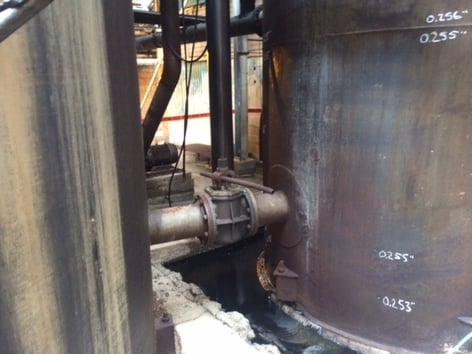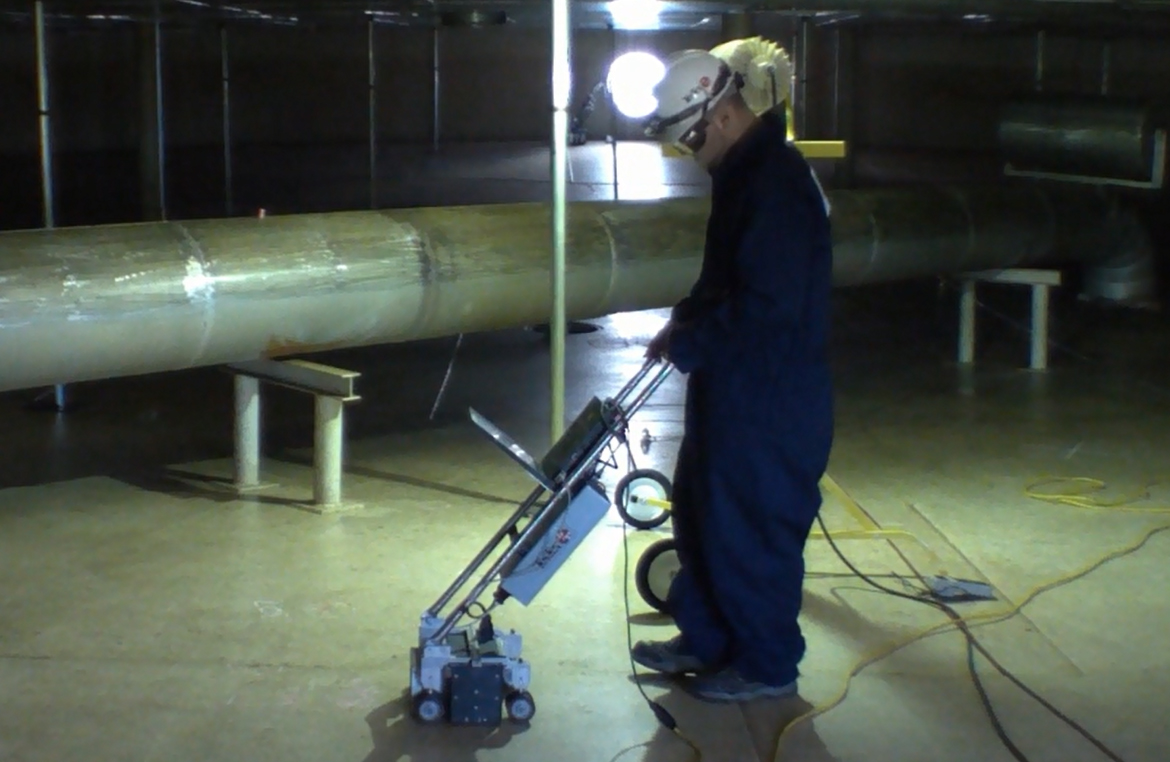Advanced Techniques in Modern Tank Welding Inspection
Wiki Article

Recognizing the Significance of Rigorous Storage Tank Welding Evaluation Processes in Preventing Failings and Enhancing Life Expectancy
In the realm of commercial operations, the value of extensive tank welding inspection procedures can not be overstated. These assessments offer as a vital line of protection versus potential failures that could not only jeopardize property integrity but additionally posture severe security dangers. By applying various examination techniques, companies can identify imperfections early, thus staying clear of expensive effects and extending the life of their tank. Nonetheless, the landscape of conformity and finest techniques is ever-evolving, motivating a closer assessment of just how these processes can be maximized for maximum efficiency. What are the emerging patterns and challenges that experts must navigate?Importance of Welding Evaluations
Identifying the crucial role of welding evaluations in maintaining structural honesty, these procedures make certain that welds satisfy recognized standards and specs - Tank Welding Inspection. Reliable welding examinations are extremely important in the building and construction and maintenance of containers, as they straight impact the longevity and safety of the frameworks. By determining potential deficiencies, such as improper strategies or material problems, evaluations reduce the threat of tragic failingsWelding inspections encompass numerous methodologies, including visual assessments, non-destructive testing (NDT), and analyses of welding procedures. Each technique offers to verify the quality and conformity of welds with industry laws, consequently safeguarding both employees and environmental interests. Moreover, regular evaluations cultivate a culture of accountability and quality within the labor force, ensuring that all employee comply with finest practices.
Additionally, these evaluations add to the general lifecycle monitoring of storage tanks by recognizing wear or degradation early in the procedure. By attending to these problems proactively, companies can extend the operational life expectancy of their properties, eventually causing cost financial savings and boosted dependability. In summary, the importance of welding assessments can not be overemphasized; they are necessary for making certain safety and security, longevity, and conformity in storage tank building and upkeep.
Usual Reasons For Storage Tank Failures
Comprehending the usual root causes of storage tank failings is crucial for preventing catastrophic incidents and ensuring the long life of storage systems. One common root cause of container failing is corrosion, which can significantly compromise the architectural honesty of containers gradually. Environmental aspects, such as exposure to dampness, chemicals, and temperature changes, can accelerate this procedure.Another essential variable is inappropriate welding strategies, which may result in defects like splits or insufficient joints. These issues can compromise the container's toughness and lead to leaks or tears. In addition, inadequate maintenance practices can result in undetected deterioration, ultimately increasing the risk of failing.
Design imperfections, including insufficient thickness or inadequate product selection, can also contribute to tank vulnerabilities. Furthermore, functional variables, such as overfilling or exposure to extreme pressures, can stress the tank beyond its intended limits.
Secret Assessment Methods
Effective examination strategies play a vital function in alleviating the dangers connected with container failures. A thorough method to container welding examination entails several key methods, each made to determine possible flaws and make sure architectural integrity.Aesthetic evaluation continues to be the very first line of protection, enabling examiners to recognize surface area abnormalities such as fractures, rust, or misalignment. This technique is typically supplemented by non-destructive screening (NDT) approaches, which are vital for evaluating weld high quality this link without jeopardizing the storage tank's integrity.

Furthermore, magnetic fragment screening (MPT) and dye penetrant testing (DPT) work for identifying surface area defects in ferromagnetic products and non-porous surface areas, specifically. Each technique has its staminas and constraints; therefore, a mix of approaches is commonly used to achieve extensive assessment outcomes.
Advantages of Extensive Assessments
While the instant costs of strenuous assessments may appear overwhelming, the long-term advantages dramatically exceed these initial financial investments. Implementing detailed assessment refines not just enhances the stability and security of storage tank frameworks yet also lessens the risk of tragic failings that can result in considerable economic losses and environmental damage.
Rigorous inspections aid determine prospective concerns early in the welding procedure, permitting for prompt corrective activities read more that protect against expensive repairs or substitutes down the line. This positive method promotes a culture of quality control, where adherence to finest techniques ends up being implanted in operational procedures. Furthermore, normal examinations contribute to boosted possession durability, as they make sure that tanks stay in optimum problem throughout their lifespan.
Additionally, the paperwork produced from these assessments works as a valuable source for upkeep preparation and performance examinations. This data-driven strategy can also improve operational effectiveness, bring about decreased downtime and enhanced performance. Ultimately, rigorous assessments not only protect the architectural stability of tanks however likewise offer significant economic advantages, enhancing the concept that spending in quality control is a smart decision for any kind of organization associated with container operations.
Regulative Criteria and Compliance
Governing standards and compliance are vital elements of container welding inspection processes, as they establish the structure for guaranteeing security and top quality in operations. Compliance with these criteria not only mitigates risks but likewise enhances the total honesty of bonded frameworks. Various companies, including the American Culture of Mechanical Engineers (ASME) and the American Petroleum Institute (API), supply guidelines that determine appropriate practices for welding, examination, and testing.These requirements mandate making use of certified workers, the execution of rigorous examination procedures, and adherence to particular welding treatments. By aligning with regulatory requirements, companies can make sure that their containers fulfill the essential security and efficiency criteria, therefore lowering the likelihood of devastating failures that can bring about significant economic losses and ecological damage.

Moreover, regulatory conformity cultivates a society of liability and continuous enhancement within the welding and manufacture markets (Tank Welding Inspection). Normal audits and assessments ensure that methods stay straightened with advancing requirements, thereby promoting long-term integrity and operational effectiveness. Eventually, adherence to regulatory requirements not only safeguards assets however also enhances the life-span of welded tanks, ensuring they serve their intended function over at this website effectively in time
Final Thought
In final thought, extensive container welding examination processes play a vital role in protecting against failures and expanding the life expectancy of storage frameworks. By determining prospective deficiencies through various inspection methods, companies can alleviate dangers associated with container honesty.Report this wiki page